One woman, standing alone onstage. No pianist, no music-stand: Just Hilary Hahn and her violin, creating miracles. That is what Harriman-Jewell Series audiences are likely to experience this October 13th, when one of the most gifted violinists of our time performs works from J.S. Bach’s Sonatas and Partitas for Solo Violin. It’s difficult to think of an artist today who has had a greater impact on our modern view of classical music than Hilary, who was born in Virginia, raised in Baltimore, and educated at the Curtis Institute of Music.
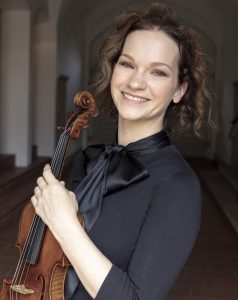
Hilary Hahn made her Kansas City solo recital debut on the Harriman-Jewell Series in 2004; this is only her second Series appearance. / Photo by Dana van Leeuwen
In addition to a global career, the three-time Grammy Award winner has commissioned dozens of works, created a travel blog, curated educational programming such as the Bring Your Own Baby concerts, and maintained a constant and active web presence. This summer she released a death-defying recording of Eugène Ysaÿe’s Six Sonatas, on Deutsche Grammophon.
Her unique recording of Bach’s unaccompanied Sonatas and Partitas appeared in two phases: She released three of the six at age 17, for Sony, and the other three more than 20 years later, for Decca. Together they form a testament to the versatility and consistency of her artistry.
Playing these works live is different matter. “There’s quite a psychological process to playing an entire concert by oneself,” she said recently on YouTube. “And Bach’s music has so many layers to it that you can get very lost second-guessing yourself. So I had to learn to really completely trust the moment and trust myself and trust that the hall would somehow tell me the tempo that needed to be played that day…”
Recently Hilary answered some questions about life, music, and her career as one of a handful of women in a historically male-dominated field.
PH: Your activities have ranged broadly: concerts for infants, blogging, commissions, web initiatives. As you tour and interact with fans, what impact do you perceive these are having on the public’s view of classical music?
HH: I do the things that I’m curious to do, because I feel like following my artistic interests gets me closer to the heart of what it means to be a musician. When I have an idea, or I sense a gap in what’s provided in the current musical landscape, I like to explore that and see what it means to people.

For nearly three centuries, live performance of the Bach unaccompanied Sonatas and Partitas has remained one of a violinist’s most daunting challenges. / Photo by OJ Slaughter
I’m often surprised. I didn’t think that #100daysofpractice would be considered vulnerable or groundbreaking, but when I read people’s comments, I realized that it was very important to continue doing the project, and that I, too, had gone through many of the realizations that they were having. In the course of doing my own five seasons of the hundred days, I learned a lot about practice, and I changed my own attitude towards it.
When you do things for the right reason, the people who want to experience those things that you were offering will find you and will get to share those experiences with you. That’s really at the core of an artist-audience relationship. Authenticity, even when simply exploring, is meaningful.
The Ysaÿe recording is a revelation: Listening to these played as a “whole” is a monumental event, akin to hearing the Bach Sonatas and Partitas in their entirety. What does Ysaÿe bring to the world that no one else does?
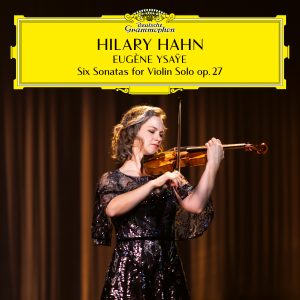
BBC Music Magazine writes of Hilary’s new disc that “her playing responds with enthralling artistry to every mercurial shade of the music’s flow of moods and ideas.” / Deutsche Grammophon
Ysaÿe’s sonatas are a milestone in the violin repertoire. Ysaÿe himself was a very musical violinist with a larger-than-life personality and a very advanced technique. He takes what we take for granted in earlier violin writing and turns it on its head, but for musical and expressive reasons. There’s a showmanship in his writing that could only come from him, someone who knew the instrument so incredibly well. …
The way that he dedicated these sonatas to people who were important to him, and included things about the dedicatees in each sonata, could also only have come from Ysaÿe. He layers lines of music for the instrument, and he layers concepts and references and ideas.
The works are polyphonic in the compositional sense, but they’re polyphonic also in the way that they combine multiple personal and musical voices from his era and before – including his own.
At what age did you first start playing these works, and how has your view of them changed over the years?
I first started playing the Ysaÿe sonatas when I was a teenager, but only No. 6. The rest I taught to myself a bit later, one by one. When you hear the sonatas a lot as a student but learn them yourself as a more mature musician, you start to immediately pull apart the threads of tradition. When you teach them to yourself once you’re out of school, you aren’t learning them for anyone’s feedback; you’re metaphorically sailing out at sea and have to find your own direction.
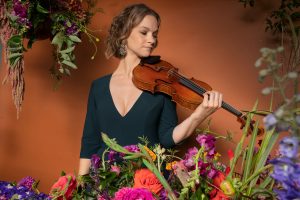
One of Hilary’s teachers was a Ysaÿe pupil.
I’ve done a lot of investigating of the works whenever I’ve returned to them, and I’ve taken long breaks from them as well. However I change as a player winds up being reflected in how I play the pieces over time.
For some reason, the Ysaÿe sonatas now feel as natural to me as if I wrote them myself. They really speak to my musical DNA. Everything I’ve been working towards as a player in the past 15 years has brought me full circle to a new understanding of these pieces, from a more intuitive place.
Why do you still believe in the classical canon? What are the fundamental truths that these works continue to uphold? And how has our view of the (largely European) canon changed since you began your career 30 years ago?
I believe in the entire canon. So much music exists already. Historically, too, one thing has led to another in the development of musical styles, even though some of the paths have become obscured for various reasons throughout history.
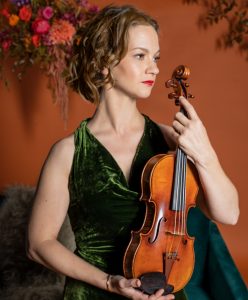
‘Contemporary music is the emotional document of our own times.’ / Photo by OJ Slaughter
When I was a student, it was a little bit radical to play pieces by living composers. Any living composers. Now, thankfully, students often learn how to work with contemporary music, even if it’s not clear where their focus in their career will end up. Contemporary music is the emotional document of our own times, just as works from the past are the emotional document of history.
What still needs some work is keeping an eye on which pieces and composers are featured across all eras, and why. There’s beautiful and powerful music from people all around the world, from people of different centuries, religions, and languages, from people of different backgrounds, with different skin tones, with different gender identities.
Essentially, there’s something for and by everyone. You just have to make sure that you’re finding the music that speaks to you and that serves the entirety of music history. It’s important to look at your career as a performer holistically because you can’t do everything all the time, but you can do almost everything eventually.
Why does talent land on some people’s shoulders and not on others? Are there ineffable, even spiritual, forces at play when an individual possesses, or is “gifted with,” exceptional talent?
I think that what’s perceived as talent is actually a combination of things. Sometimes when a person is good at something immediately, we say they’re talented. But sometimes that doesn’t last: It’s beginner’s luck. Sometimes when someone has worked very, very hard at something for a long time, we say they’re talented. But is that talent, or persistence? Is it given or earned?
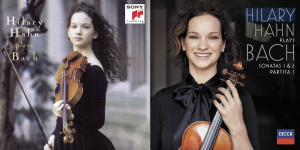
Hilary famously recorded three of the Bach Sonatas and Partitas at the age of 17, the other three at 38.
There are many people who would be excellent at things that they’re never exposed to. Access to the arts can be selective. I think the arts are strongest when they allow us to express our individual selves. Not everyone connects with every art form, but everyone has something to say from deep within themselves.
The combination of the expressive drive and access to the channel in which one is most fluent at expressing oneself is, I believe, what we actually wind up calling talent. If you’re lucky enough to spend time on something in which you’re naturally fluent, you can go far. But even if it doesn’t come naturally, if you have the vision for what you want to do and you have the right circumstances to realize that vision, you’re in a magical zone.
For tickets to Hilary’s recital, call 816-415-5025 or go to hjseries.org. To reach Paul Horsley, performing arts editor, send an email to paul@kcindependent.com or find him on Facebook or Twitter, Instagram, and LinkedIn.